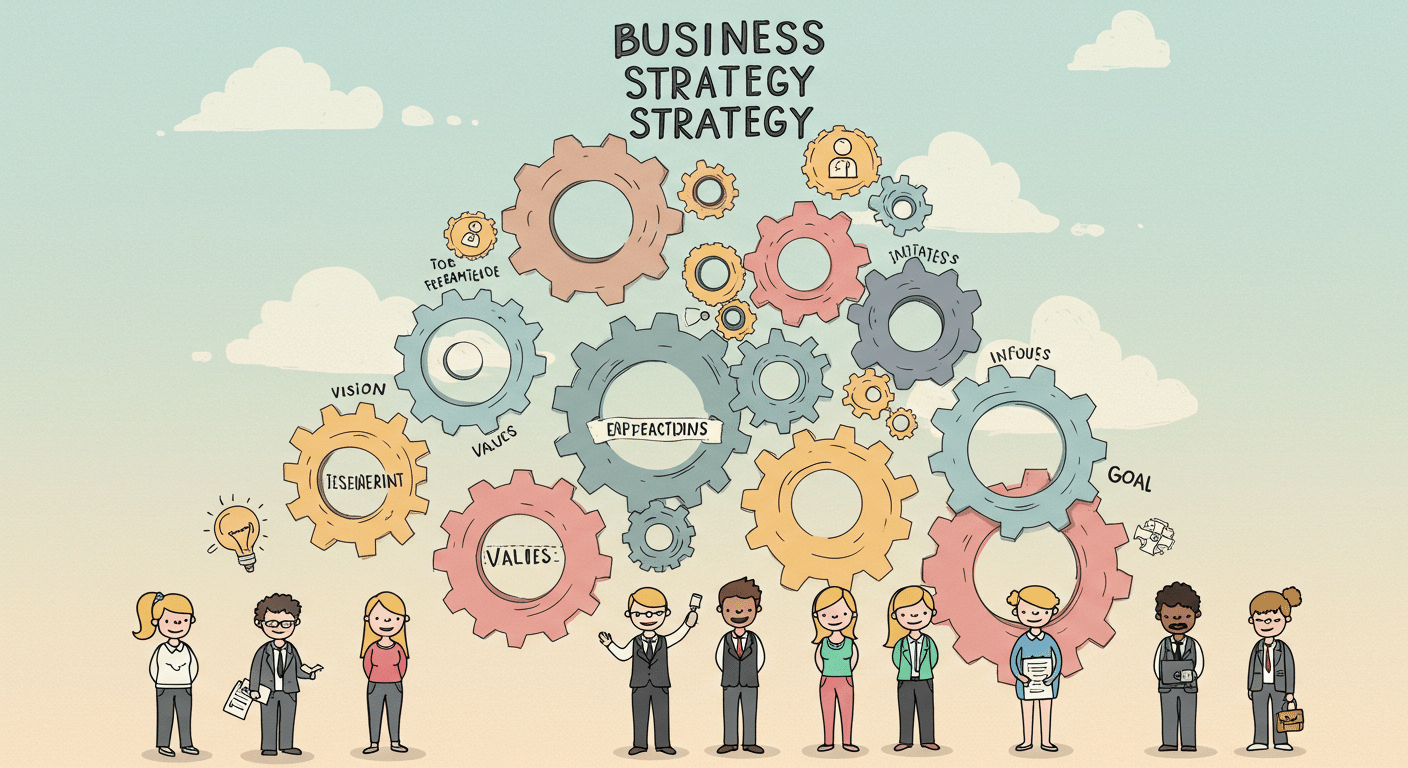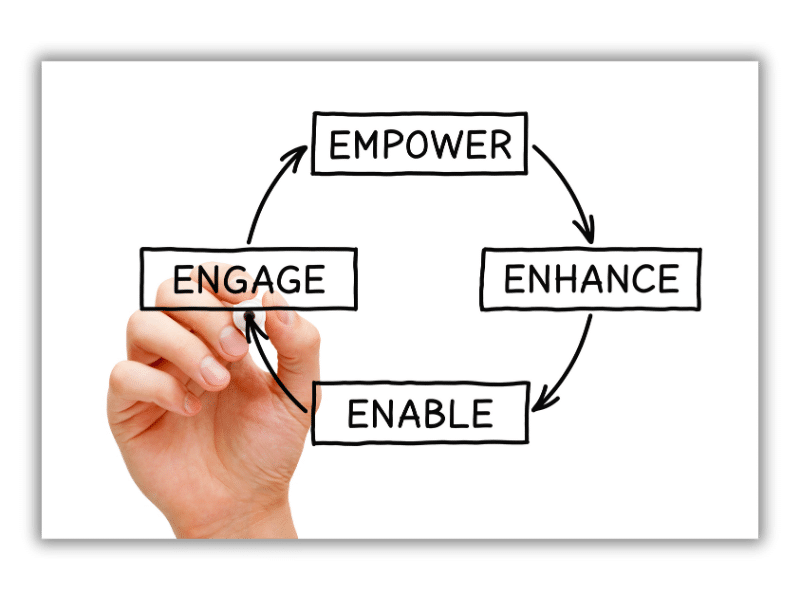Cascading Strategy and Execution: How to Embed Habits Across the Organization
Building a company that can truly scale doesn’t stop with leadership alignment. It begins there.
Cascading strategy and execution across the entire organization is the real unlock for momentum, culture, and growth.
As coaches, we often see a familiar pattern. The leadership team emerges from a strategic planning session aligned and energized. But weeks later, the strategy remains trapped at the top. Mid-level managers are unclear. Frontline employees are disconnected. Progress stalls.
The issue isn’t the plan. It’s the lack of a system to cascade execution habits all the way through the business.
Here’s why cascading strategy and execution is critical—and how you can guide your clients to do it well.
Why Cascading Strategy and Execution Drives Real Results
When companies successfully cascade strategy and execution:
-
Employees clearly understand company goals.
-
Teams connect their daily work to the bigger mission.
-
Decisions happen faster without bottlenecks.
-
Accountability is embedded into the culture.
-
Engagement and retention improve dramatically.
In contrast, when strategy stays siloed at the top, companies waste time, energy, and opportunity.
A strong strategy only works when it’s translated into action at every level of the business.
Related Resource: Learn how Align’s Daily Huddles help teams stay connected to strategic priorities
How to Spot When Strategy Isn’t Cascading
Here are common warning signs:
-
Mid-level managers can’t articulate the company’s top priorities.
-
Employees don’t understand how their work impacts goals.
-
Departmental silos remain strong even after planning sessions.
-
Leaders complain about constantly having to “push” execution.
-
Old habits return quickly after strategic resets.
If your clients show these signs, it’s time to introduce better systems for cascading strategy and execution throughout the organization.
Five Ways Coaches Can Help Clients Cascade Strategy and Execution
Cascading execution doesn’t happen by accident. It requires intentional systems and behaviors.
Here’s how you can help your clients make it stick.
1. Simplify the Strategy
Help your clients distill their strategic plans into simple, actionable language.
Every employee should understand:
-
Where the company is going.
-
What the top priorities are right now.
-
How their role contributes.
Avoid jargon. Focus on clarity.
Coach’s Tip: Run a quick test. Ask frontline employees what the top priority is. If they struggle to answer, simplify further.
2. Use Tools That Reinforce Execution Habits
Strategic focus needs to show up daily, not just quarterly.
Encourage clients to implement simple execution rhythms:
-
Daily Huddles: 10-minute team stand-ups centered on key priorities.
-
Weekly Meetings: Check-ins on KPIs and quarterly goals.
-
Dashboards: Visual tracking of progress.
-
Task Management: Clear accountability for actions.
See how Align’s Task Management feature supports daily execution. When these tools are part of the daily workflow, execution becomes habitual.
3. Personalize Priorities at Every Level
High-level goals are important, but people engage when they see their own role in the mission.
Work with clients to break down company priorities into:
-
Department priorities
-
Team goals
-
Individual targets
Track and celebrate progress using visible tools like Align’s Dashboards.
When people see real traction, motivation rises naturally.
4. Help Leaders Model the Right Behaviors
Employees watch what leaders do.
If leadership ignores the operating system—skipping huddles, not updating dashboards—employees will too.
Encourage leaders to:
-
Consistently hold Huddles and Meetings.
-
Publicly track and update their own goals.
-
Speak often about strategic priorities.
Strategic discipline must flow from the top down.
5. Create Energy with Quarterly Themes
Strategy can feel heavy. Quarterly Themes help make it exciting.
Suggest clients launch themes around big goals. Some examples:
-
“Mission: Margin” for a profitability push.
-
“100 New Customers” to drive sales.
-
“Zero Defects” to rally operations teams.
Themes gamify execution and build energy across departments.
Common Pitfalls in Cascading Strategy and Execution
| Mistake | How to Fix It |
|---|---|
| Overcomplicating strategy | Simplify and communicate repeatedly. |
| Top-down-only communication | Engage managers and teams in shaping priorities. |
| Neglecting middle management | Train and equip them as key communicators. |
| “Set and forget” mentality | Regularly review, refresh, and celebrate progress. |
Bottom Line for Coaches
Strong leadership alignment is important.
But cascading strategy and execution across the organization is what builds sustainable, scalable companies.
By helping your clients embed strategic habits at every level, you empower them to:
-
Grow faster
-
Reduce leadership bottlenecks
-
Strengthen culture
-
Build a business that can scale—or even sell
It’s not just about having a plan. It’s about making execution part of the company’s DNA.
Smart moves today. Big wins tomorrow.
Additional Resources for Coaches
🔍 Webinar: Six Tactics for Effectively Cascading Your Strategic Plan
Presented by Jen Scumaci, this session offers tactical advice you can pass on to clients.
📚 Recommended Book: The Four Disciplines of Execution by Chris McChesney, Sean Covey, and Jim Huling
Perfect for clients struggling to keep focus on the “wildly important goals.”
Try This With Your Clients
✅ This quarter, coach your clients to roll out Quarterly Priorities and Daily Huddles with at least one frontline team.
✅ Use Align to track engagement and results.
✅ Watch for the ripple effect on culture, speed, and accountability.
Small habits, practiced daily, lead to extraordinary growth.





